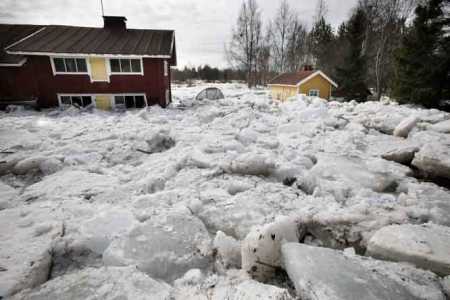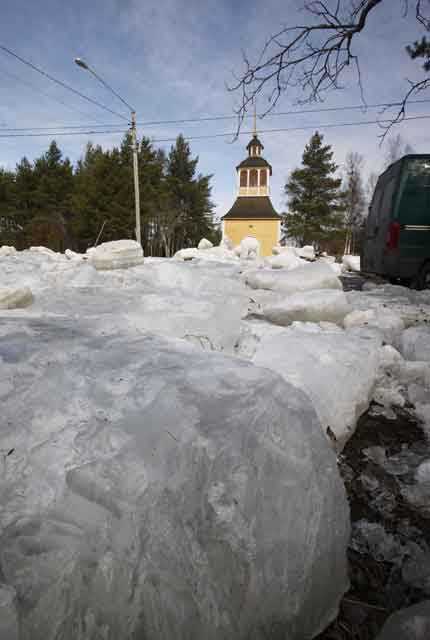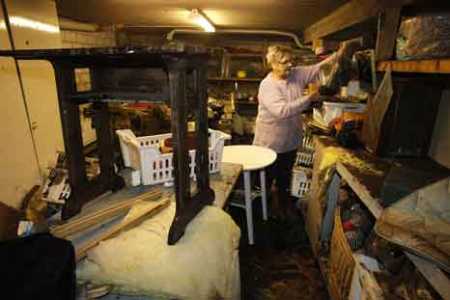Mon, 22 Apr, 2013 12:19:02 AM 50 years’ worst flooding hits Pyhäjoki FTimes-STT Report, April 22
 Flood-yard blocks of ice brought the river. Photo - Str/ Lehtikuva The residents of Pyhäjoki in North Ostrobothnia were asked to evacuate as the flood situation there deteriorated further on Sunday, with more residential buildings, highways, and fields going under the spring thaw.
The situation, however, remained unchanged in Central Ostrobothnia and was on the mend in South Ostrobothnia, official sources said.
Pyhäjoki Mayor Matti Soronen said the flooding in the area was the worst-ever seen in the last 50 years. He said flood water entered at least 15 more residential bvuildings.

Photo - Str/ Lehtikuva ‘The floor of my home is under 10 centimetre deep water. I have taken shelter in my daughter’s residence,’ a resident of Pyhäjok, Raija Toppari, told STT on Sunday, adding that despite being 100 metres off the Pyhäjoki River, flood water entered the locality submerging even letter boxes and dustbins.
Raija’s son Jussi Topparri said flood water also inundated vehicles standing in the parking slots on Sunday.
Ely centre sources said the water level in the Lijoki and the Kuivajoki also rose, being fed by the spring thaw, and will continue to rise through the upcoming week.
The flood situation worsened as a 500-metre-long ice dam began to melt.

People inside the house flooded by water. Photo - Str/ Lehtikuva The flooding took a serious turn in Pyhäjoki on Saturday, with a number of residential buildings being affected by flood water and at least 30 people evacuated from the area.
The flood-hit people took refuge in the houses of their friends, relatives, and neighbours.
The Pyhäjoki municipality on Saturday arranged temporary shelters and evacuation services for the people affected by the flood as the environment department warned the situation would continue to get worse for the next couple of weeks.
Jokilaakso Rescue Department Director Jarmo Haapanen said on Saturday flood water entered at least 12 houses in the locality.
The flooding began on April 17, when river water levels in South Ostrobothnia suddenly began to rise, gorging on the spring thaw and rainfalls.
More News
|
|
Finland Times
| Thursday, 27 November, 2025 |

